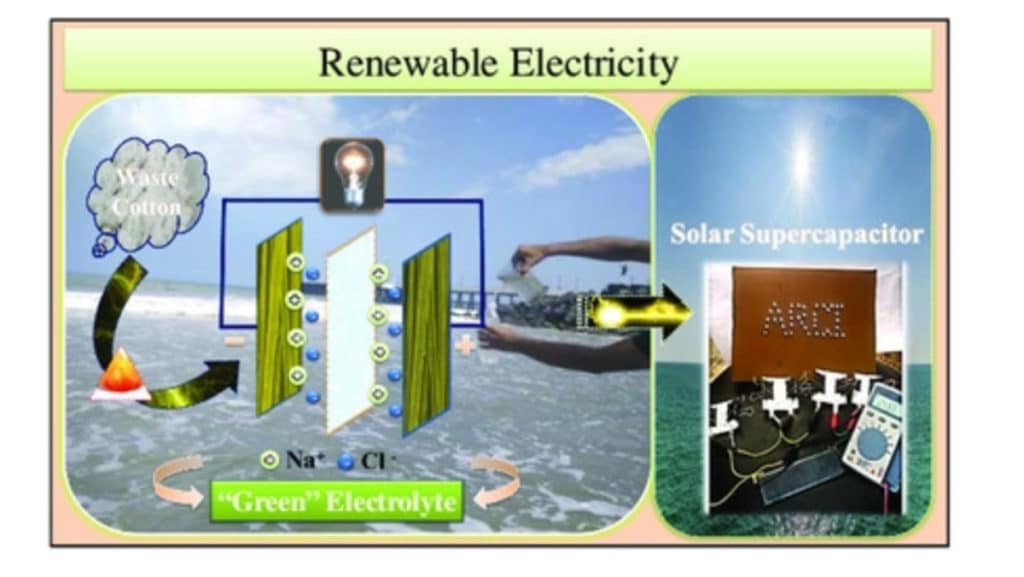Scientists at the International Advanced Research Centre for Powder Metallurgy and New Materials (ARCI), an autonomous organization of the Department of Science and Technology, Govt. of India have developed a simple, low-cost, environmentally friendly, and sustainable supercapacitor electrode derived from industrial waste cotton which can be used as an energy harvester storage device. For the first time, natural seawater is explored as an environmentally friendly, cost-effective, scalable, and alternative aqueous electrolyte, which may replace the existing aqueous-based electrolytes for the economic fabrication of supercapacitor.
In search of a cost-effective material for making affordable supercapacitor devices, scientists at ARCI have converted industrial waste cotton (Trash) into highly porous carbon fibers (Treasure) by activation process and then utilised the porous carbon fibers to make high-performance supercapacitor electrodes.
The research team’s new, sustainable and green supercapacitor device shows great potential for practical application, and perhaps most importantly, the integrated solar cell with seawater-based supercapacitor as low cost, eco-friendly, efficient and self-powering device. The successful demonstration of the device revealed that solar-powered supercapacitors can not only store the electrical energy but also overcome the drawbacks of the intermittent nature of the solar irradiation. Hence, the integrated solar cell with supercapacitor can be used as an energy harvester storage device due to their long cycle life and maintenance-free power supply.
“The large-scale use of renewable energy requires creation of matching capacity for inexpensive electrical energy storage. This study provides a solution for fabrication of super-capacitors from such abundant materials as waste cotton and seawater! It is an excellent example of the creative science for the sustainable, green processes embedding principles of waste-to-wealth,” said Prof Ashutosh Sharma, Secretary, DST.
In the recent research published in Energy Technology, scientists at ARCI demonstrated the feasibility of using seawater as natural electrolyte for the fabrication of aqueous-based supercapacitor devices which shows great potential for practical implementation.
Abstract
This study demonstrates a facile, cost‐effective, green, and sustainable fabrication of supercapacitor devices using high surface area (2350 m2 g−1) activated carbon fibers as supercapacitor electrode. The electrochemical behavior of the supercapacitor electrodes with different neutral electrolytes such as LiCl, KCl, and NaCl is carefully investigated and compared with natural seawater as an economic and sustainable electrolyte for the first time. The maximum specific capacitance of carbon fibers electrode in different electrolytes is around 101 Fg−1 in LiCl, 134 Fg−1 in KCl, 159 Fg−1 in NaCl, and 172 Fg−1 in natural seawater at a current density of 1 Ag−1. Surprisingly, the seawater‐based supercapacitor exhibits a very good durability upon 10 000 charge–discharge cycles with 99% of capacitance retention and 99% of coulombic efficiency. For practical validity, integrated solar cell–based supercapacitor pouch cells are investigated. The seawater is explored as an eco‐friendly, cost‐effective, and alternative aqueous electrolyte, which may replace the existing aqueous‐based electrolytes for the fabrication of an economic and green supercapacitor device.
